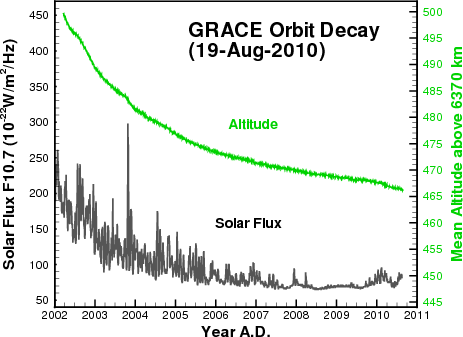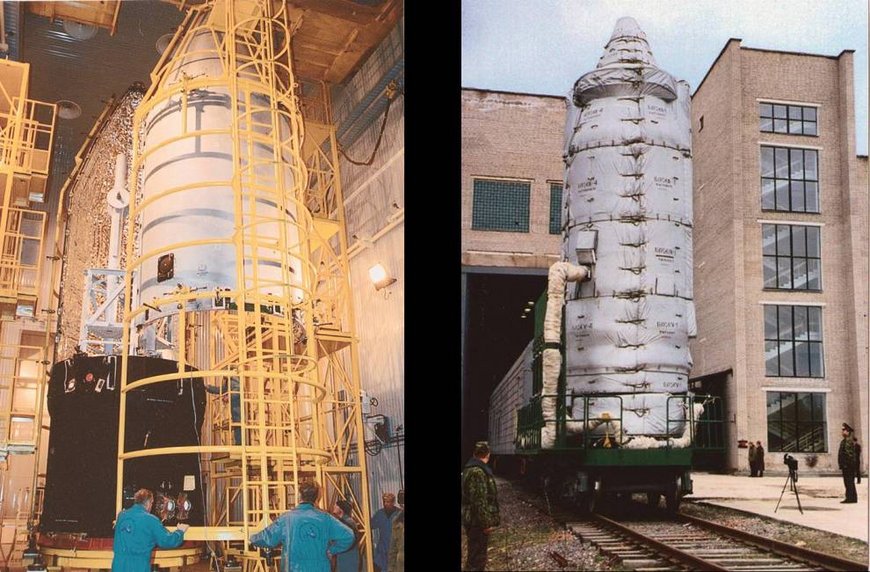GRACE Launch and Orbit Decay
Both GRACE satellites were launched simultaneously with a ROCKOT launch vehicle from Plesetsk/Russia on March 17, 2002. The ROCKOT launch vehicle services are provided by EUROCKOT Launch Services GmbH, a joint venture company of DaimlerChrysler Aerospace and Khrunichev State Research and Production Space Center. ROCKOT is a three-stage launch vehicle, comprising an adaption of the SS-19 for the first and second stages, and the maneuverable and re-ignitable BREEZE third stage. With a launch mass of 107 tonnes, ROCKOT can place up to 1900 kg payload into a low Earth orbit.
The GRACE orbit is almost polar (i=89.0°) and near circular (e<0.005) and started with an initial altitude of 500 km. The anticipated lifetime for scientific operations was 5 years. The near-polar orbit was chosen to get a homogeneous and global coverage of the Earth's sphere which is necessary for a precise estimate of the gravitational geopotential. The advantage of the 89.0° orbit vs. a dawn-dusk sun-synchronous orbit is the local time variation of the satellite's ground tracks which is essential for the separation of constituents of periodic phenomena like tides or day-night variations of the atmosphere. An initial altitude of 500 km was chosen (a) in order to guarantee multi-year mission duration even under severe solar activity conditions and (b) to get a good compromise between gravity field solutions, which desire an even lower altitude, and atmospheric/ionospheric applications, which in contrast would benefit from a higher altitude.
Due to atmospheric drag the altitude of the GRACE satellites decrease over the mission duration. As GRACE has been launched around the last solar activity maximum, the predicted natural decay depends on the magnitude of the actual solar activity cycle and has amounted to about 34 km (status August 2010).

During science data collection the satellites are nominally Earth oriented. For precise pointing of the two K-band ranging system antennae both satellites are pitched by about -1°. This causes drag force differences which result in along-track separation changes. Therefore regular station-keeping maneuvers are carried out (1-2 per year) to keep the two satellites at their nominal separation of 220 ± 50 km. To ensure the uniform exposure and aging of the K-band antennae the leading and the trailing satellite have been exchanged in December 2005.


